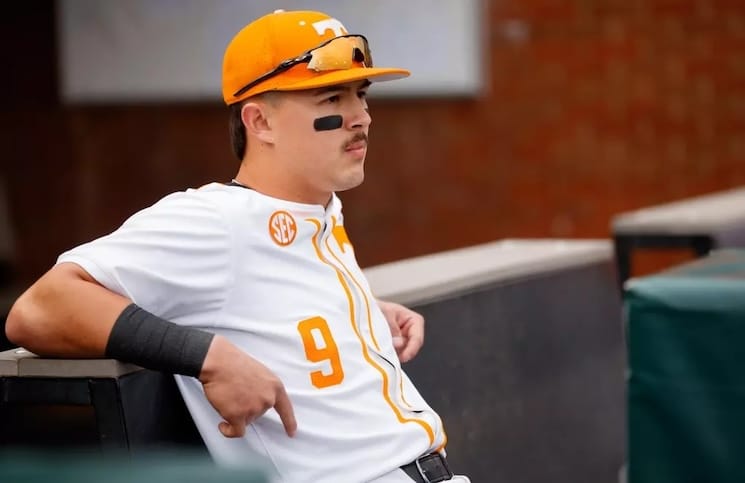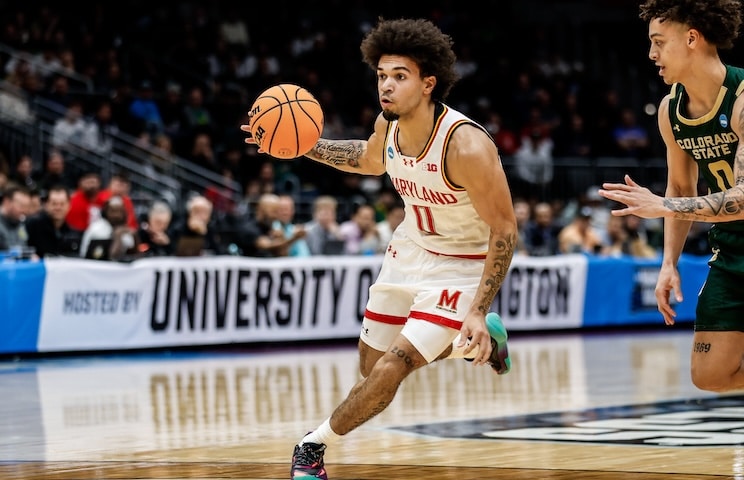
On late Friday afternoon, Tennessee picked up a commitment from Oregon guard transfer Victor Bailey Jr. in men’s basketball. Bailey played two seasons for the Ducks and is expected to sit out the upcoming 2019-20 season but will have two years of eligibility after that.
What kind of player are the Vols getting with the addition of Bailey? I spoke with James Crepea of The Oregonian to find out what Tennessee’s newest addition brings to the table.
According to Crepea, the main reason for Bailey electing to transfer wasn’t due to a crowded returning backcourt or potential lack of playing time next season; the reason had a lot to do with Bailey’s role taking a drastic turn during the season.
“Victor’s not leaving because of a crowded backcourt; Victor’s leaving because later in the season while Oregon took off and had a lot of success, his role change and changed dramatically,” Crepea stated. “It changed to a point where he didn’t even play in the season finale. And that was, obviously, incredibly discouraging for him. I asked him after that game, ‘Look, there’s only one way to ask this, but you’re a scorer, a shooter. Everybody wants to play. You quite literally did not play tonight. What are your thoughts about the future?’
“When he couldn’t definitively answer that he was coming back, that was a good sign that yes, he was probably going to look to transfer.”
As a sophomore for Oregon, Bailey averaged 7.4 points and 2.0 rebounds per game in 19.1 minutes per contest. But his playing time decreased significantly down the stretch of the season. In his first 27 games, Bailey averaged 21.9 minutes a game and 8.6 points a game. But over his final 10 appearances, Bailey averaged a mere 11.7 minutes per contest and just 4.1 points a game. As Crepea mentioned, Bailey didn’t even play in Oregon’s final NCAA Tournament game against Virginia.
What was the reason for that decreased playing time? According to Crepea, Bailey’s dip in minutes was due to an inability to do other things besides score.
“Victor is a shooter, and at times I think he can be a pretty decent volume shooter if he’s shooting well enough. But he, by his own admission, let his offense affect his defense this past season,” Crepea explained. “I’m not saying that can’t be corrected, and he’s certainly not the only shooter out there who lets that happen. But if he shot multiple threes and made multiple threes, in the games in which he did that, his contributions and production in other areas of the box score were significantly higher than in games where he either didn’t make multiple threes or just didn’t shoot very much.”

Oregon needed Bailey to do more than just shoot and put points on the board, but unless he was having a good offensive game, that wasn’t happening as often as head coach Dana Altman liked. That’s why Altman decided to trim down his minutes.
When Bailey started playing less and was having a smaller role on offense, he stepped up his game in other areas to compensate, though.
“While those minutes went down, his production in other areas went up,” Crepea said. “Which only further underscored why his role was changing in the first place. While his minutes went down, Dana was happy with the contributions he was getting from him down the stretch because his contributions elsewhere, rebounding in particular, increased.”
In his first 27 games, Bailey was averaging two rebounds a game in his nearly 22 minutes of action. In the final 10 games he played, Bailey still averaged two rebounds a game despite seeing his minutes per game drop by over 10 minutes a contest. Bailey pulled down three or more rebounds in 12 of his 37 games he played last season, but four of those instances came in his final 10 appearances.
Bailey had to play more and differently earlier in the season because of Oregon’s “fluid lineup” as Crepea called it. The Ducks dealt with multiple injuries — most notably to star center Bol Bol — and had to try and figure out different starting lineups and rotations that worked. That’s why Bailey started eight of Oregon’s nine games from December 18th through January 24th.
His role may have changed down the stretch for Oregon, but that doesn’t change the fact that Bailey is a very effective shooter when allowed to be.
“He’s a guy who can shoot, but this is a guy who’s going to be a rhythm shooter. This is not a shooter who creates his own shot from the outside,” Crepea explained of Bailey’s style of play. “Now, he can get to the hoop. If anything, in my amateur observation of Victor, I thought he probably should get to the hoop more. I think he can create as a penetrator, but I don’t think he’s going to be a shot creator for himself either from the outside or on a pull-up jumper just inside the perimeter. That’s not really his game.
“He’s a guy who’s going to catch it in rhythm and shoot and be that kind of shooter. Again, he can get to the hoop…he probably could’ve gotten to the hoop more, but some of that is probably just the design of Oregon’s offense where they really weren’t asking him to do that very much.”
Bailey shot 39.8 percent from three as a sophomore, and he made two or more three-pointers in 12 of the 37 games he played in. But Bailey didn’t exactly look for contact and, as Crepea said, didn’t attempt to cut to the basket nearly as much as he opted for jumpers.
Of Bailey’s 223 total field goal attempts, 118 of them came from the perimeter. That’s 52.9 percent of his overall shots coming from three. Bailey only got to the free throw line 45 times on the season, though he was effective when he got there, connecting on 41 of those attempts.
Still, his three-point shooting was what made him the most dangerous, and Bailey had the best three-point shooting percentage of any of Oregon’s qualifying players. In fact, he had the ninth-best shooting percentage from three in the entire Pac-12 last season.
Coming out of high school in Austin, Texas, Bailey was listed as a point guard by recruiting services. The 6-foot-4, 190-pound guard was rarely used in that type of role for Oregon, however.
“I would be very hesitant to suggest that he would be a significant point guard contributor,” Crepea stated. “If you’re going to have a guy be a floor general type of point guard, generally they’re either going to be a slasher or they’re going to be a distributor. Yeah, they may have a little bit of an outside game, but they’re not going to be a guy who’s going to bring the ball up, handle it all the time, and then start the passing rhythm but then be the last guy to get the ball and shoot from the outside.”
Crepea added that Bailey was used “almost exclusively” at the two-guard spot for Oregon last season, and his ball-handling duties were at a minimum. Still, Bailey did average almost an assist a game in his 19 minutes of action per game.
But clearly, Bailey was not viewed as a point guard at Oregon, and Crepea believes that all the teams recruiting him once he put his name in the transfer portal weren’t looking at him that way either.
Though things didn’t necessarily end the way he wanted at Oregon, Bailey didn’t let that sour his attitude or his relationships on the team. Crepea said that Bailey remained a solid teammate through and through, and head coach Dana Altman made it clear that he wanted him back after the season. Altman was even asked specifically at the end of the season about Bailey, and he claimed then that he wanted to see the sophomore return to the Ducks’ roster.
“If Dana Altman truly didn’t want Victor Bailey Jr. back, I think he could’ve given a different answer,” Crepea said. “Ultimately, I understand why Victor chose to leave, though.”
Tennessee took in Arizona State transfer Uros Plavsich earlier this offseason, and while the consensus seems to be that UT can and will get the seven-footer eligible for the upcoming 2019-20 season, Bailey’s status as an immediate contributor is far less certain. In fact, Crepea went as far as to say that “unless there’s something I’m blissfully unaware of,” he doesn’t see Bailey applying for or getting a waiver from the NCAA.
“With the way transfers have been granted this past year, I don’t want to get in the habit of predicting anything,” Crepea added. “But I would be rather surprised.”
Even for all the knocks on his game and clear areas he needs to improve on, Bailey was still a solid contributor for Oregon and projects to be a much-needed veteran presence on Tennessee’s roster in the 2020-21 season. The Vols will no longer have Lamonte Turner and Jordan Bowden that year, meaning their most potent three-point shooters will be gone. Someone like Bailey will be very welcome to the team.
Crepea certainly thinks that Bailey still has plenty left to give for his two years of remaining eligibility.
“Do I still think he’s a player who can contribute to a program? Yeah, absolutely,” Crepea said. “But Dana Altman was asking him to do some different things down the stretch.
“This is a guy who is a talented player whose role changed here. He’s probably going to have ample opportunity, I would imagine, to be a pretty significant shooter for Tennessee.”



